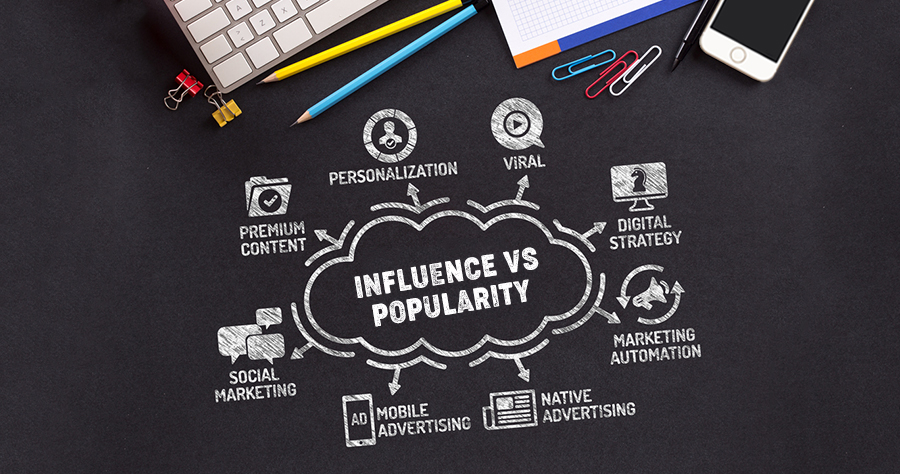
Think of your current marketing campaign: what does success look like to you?
Do you want to reach a targeted – but engaged – audience and achieve a high conversion rate? Or do you want to get your brand out there with a big bang viral strategy that scores impressions and ramps up your follower count?
Your campaign goals will determine whether you need to collaborate with an influencer, what kind of influencer you should build a relationship with, and if you’re aiming for a wide reach (popularity) or depth of reach (influence).
Influence and popularity might look the same, but they’re not.
Do you remember Sweet Valley High? Sweet Valley High was a 603-book-strong series of tween novels which followed the adventres of identical twin sisters Jessica and Elizabeth as they navigated the melodramas of high school life in California. Jessica was bold, brash and popular. Elizabeth was bookish and reserved, and had a small friendship circle that stung in authenticity compared to her sister’s dazzling clique.
In the world of influencer marketing, there are the popular Jessicas with their hoards of followers, and the more authentic Elizabeths with their small but invested audiences.
The Jessica
A celebrity influencer with a follower count in the millions doesn’t automatically make them the best option for your campaign. Sure, they’re dazzling, but they might not hold the same level of resonance and relevance that a niche expert with a much smaller following would command. And then there’s always the chance that your busy celebrity might pull a Scott Disick (although, if skinny-tea brand Bootea’s goal was to raise brand awareness, Disick’s faux pas certainly did the trick).
The problem with gunning for popularity is that if you’re measuring your campaign’s success according to its width only – follower counts and content impressions – how do you know who is really listening?
Follower counts only matter if your audience cares about and consumes your content. If 20k of your 50k Instagram followers download your eBook, that’s a valuable conversion, but if you’ve purchased 100k fans and you’re still not seeing engagement on your posts, it’s because nobody cares.
Seriously. Nobody cares.
The Elizabeth
According to McKinsey, we’re 50 times more likely to buy a product or order a service that has been recommended by a trusted friend than we are if the same recommendation comes from a celebrity, columnist, or Internet personality. The same report states that word of mouth advertising generates double the sales of paid advertising. Nielson’s 2015 Global Trust in Advertising report states that 80% of consumers will buy a product recommended by friends, with two thirds saying they trust other consumers’ opinions as well.
Most influencers – of the non-celebrity variety – already come with an invested audience who care about quality over quantity. These influencers have been talking to their audience for years. They have a relationship with their readers. They’re the online friends whose recommendations matter.
Sara Donaldson has around 700k followers across her channels, a small audience compared to someone like Disick. The difference is influence. Speaking to ABC News about her readers, she said:
“They read my blog, they follow my Instagram and they actually buy what I tell them is trending, so I know that my audience. When I put something up, they actually do convert into sales [sic].”
The sweet spot
But are influence and popularity mutually exclusive? Do you have to choose one without the other? If you look at influencer marketing according to Stephen Covey’s rocks and pebbles theory, would it be safe to say you can have your cake and eat it?
Let’s assume you’re marketing Best Lipstick, and your goal is to 1) raise brand awareness and 2) convert leads to sales. If you employ Covey’s principle to influencer marketing, you’d need to find a popular influencer with a big following to run your core content. This influencer would be your rock, and would guarantee eyes on your content. You’d then seek out smaller influencers (niche beauty and make-up bloggers) to disseminate your core message to their engaged audiences. These are your pebbles, and more likely to drive click-through rates and sign-ups. It’s a possible viral campaign that feeds into smaller more authentic influencer channels, and has the potential to positively affect your ROI.
Right?
It all depends on the authenticity of the content.
If there’s one thing you take from this piece, it’s that when it comes to investing in an influencer, choose one that knows what matters to their audience.
Courtesy: www.socialmediatoday.com




Leave a Comment